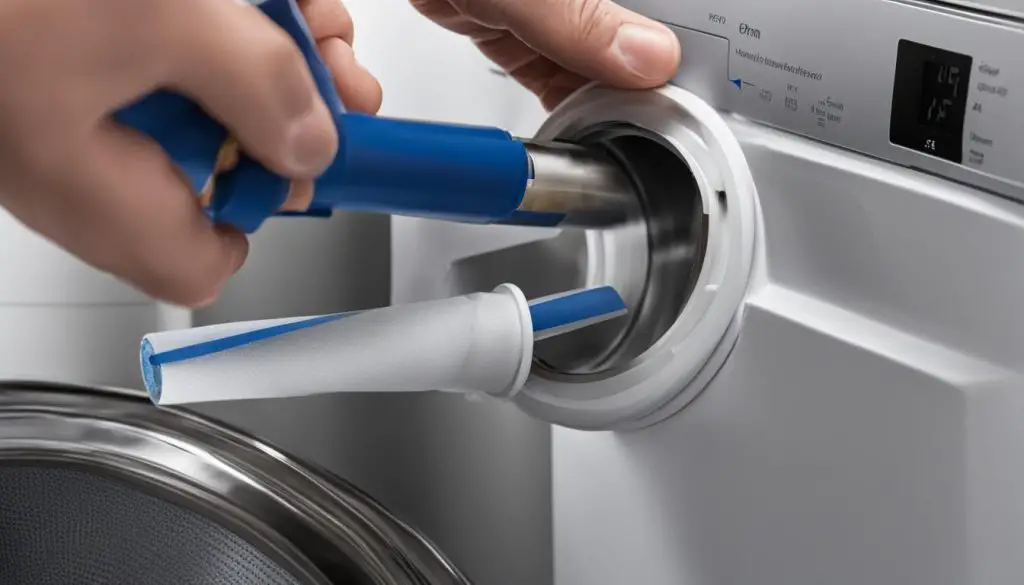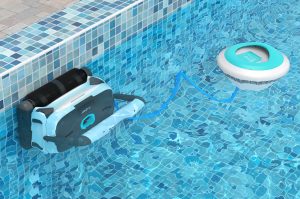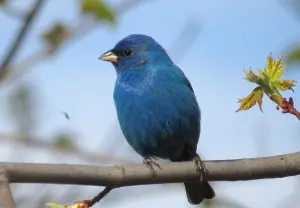Venting a washing machine drain pipe is crucial for maintaining a properly functioning plumbing system. Without proper ventilation, you may encounter a range of plumbing problems, including clogged drains, water leaks, and foul-smelling odors. Understanding why venting is essential and learning how to vent a washing machine drainpipe correctly will help you avoid these issues and keep your washer running smoothly.
Key Takeaways:
- Proper ventilation is necessary to prevent plumbing issues when using a washing machine.
- Without ventilation, you may face clogged drains, water leaks, and unpleasant odors.
- Signs of poor drainpipe ventilation include foul smells, gurgling sounds, slow drainage, and water backup.
- To vent a washing machine drainpipe, follow the steps of disconnecting power and water supplies, locating the drainpipe, running it into a vent stack, installing a P trap, and an air admittance valve.
- Maintain your washing machine drain by cleaning the lint trap, checking and cleaning hoses and drainpipes, and ensuring proper spacing.
Also read: How Much Water Does a Washing Machine Use?
Why Should You Vent a Washer’s Drainpipe?
Proper ventilation is crucial for maintaining the functionality of your washer’s drainpipe and ensuring the overall health of your plumbing system. Let’s explore the benefits of washer ventilation and why it is essential for a well-maintained home.
Preventing Water Leaks and Pipe Bursts
When a washer’s drainpipe is not properly ventilated, it can lead to excess pressure in the pipe. This can cause water to back up, resulting in leaks and potential pipe bursts. Ventilation provides a pathway for air to escape, regulating the pressure within the plumbing system and preventing these costly and damaging issues.
Eliminating Harmful Sewer Gas
Without proper ventilation, sewer gas can accumulate within the drainpipe and seep into your home. Sewer gas contains toxic substances and foul odors that can pose health risks to you and your family. Ventilation allows the gas to safely escape, ensuring a healthy and odor-free environment.
Improving Air Quality
A poorly ventilated drainpipe can result in unpleasant odors circulating throughout your home. These foul smells can be especially prominent in the laundry area. Ventilation effectively removes these odors, improving the overall air quality and creating a more pleasant environment for you and your loved ones.
Proper washer ventilation is a simple yet effective way to maintain the functionality of your plumbing system, prevent water leaks, eliminate sewer gas, and improve air quality.
Signs of Poor Drainpipe Ventilation
Recognizing the signs of poor drainpipe ventilation is essential for maintaining a healthy plumbing system. Ignoring these indications can lead to unpleasant consequences such as foul smells, gurgling sounds, slow drainage, and even water backup in sinks. Here are a few signs to check for:
- Foul Smells: One of the most evident signs of poor drainpipe ventilation is unpleasant odors emanating from your washing machine. These odors result from the buildup of stagnant water and sewage gases, indicating a lack of proper ventilation.
- Gurgling Sounds: If you hear gurgling or bubbling noises when your washing machine drains, it suggests that air is trapped within the pipes. This typically occurs when there is inadequate ventilation, causing pressure imbalances in the plumbing system.
- Slow Drainage: Another telltale sign of poor drainpipe ventilation is slow drainage. If your washing machine takes longer than usual to drain, it could indicate a clog or blockage caused by improper ventilation.
- Water Backup in Sinks: Poor drainpipe ventilation can lead to water backup in sinks and other drains connected to the same plumbing system. If you notice water rising in your sink when the washing machine is in use, it is a clear indication of ventilation issues.
If you notice any combination of these signs, it is crucial to evaluate your drainpipe ventilation system and take appropriate action. Failing to address these problems can lead to more significant plumbing issues, potentially causing water damage and costly repairs.
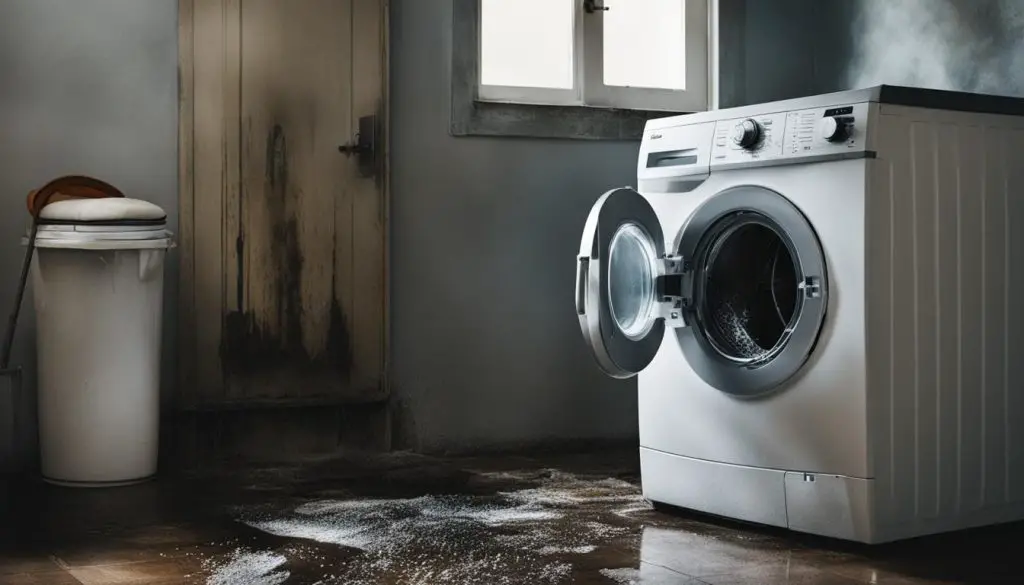
Steps to Venting a Washing Machine Drainpipe
Venting a washing machine drainpipe is a crucial step in ensuring proper plumbing system functionality and preventing issues like clogged drains and foul smells. Follow these steps to vent your washing machine drainpipe effectively:
- Disconnect power and water supplies: Before starting any work on your washing machine drainpipe, make sure to disconnect the power and water supplies to ensure your safety.
- Locate the drainpipe: Identify the location of your washing machine drainpipe. It is usually situated behind or next to the washing machine.
- Run drainpipe into vent stack: Connect the drainpipe to a vent stack, ensuring that it has proper drainage. The vent stack allows air to enter and exit the plumbing system.
- Install a P trap: Install a P trap in the drainpipe to prevent odors and harmful gases from entering your home. The P trap creates a water seal that acts as a barrier against sewer gas.
- Install an air admittance valve: Install an air admittance valve (AAV) in the drainpipe. The AAV allows air to enter the drainpipe while preventing the escape of sewer gases.
- Test the drain: Finally, test the drain by running water through the washing machine. Check for any leaks or issues with drainage. If everything is functioning correctly, your washing machine drainpipe is properly vented.
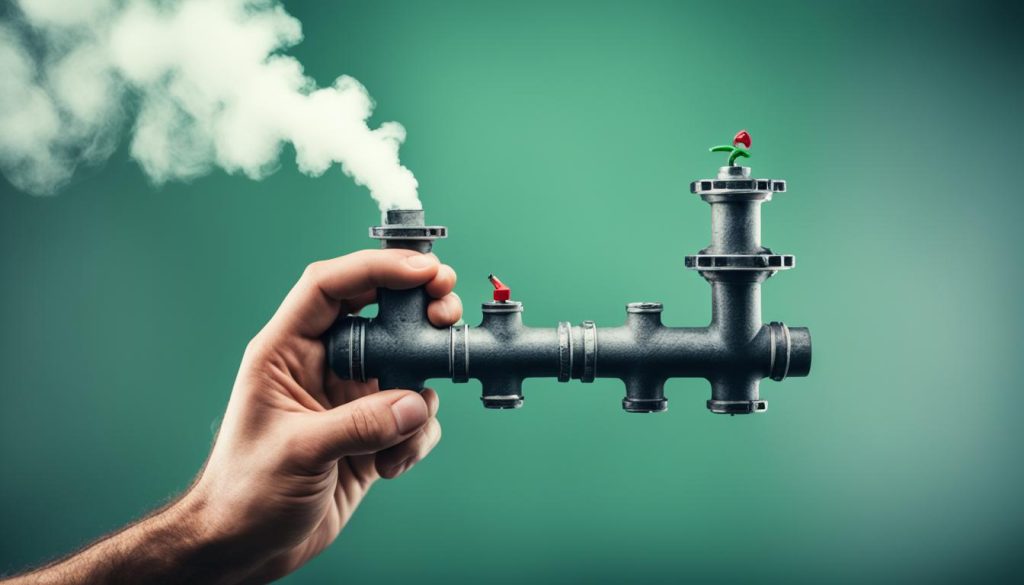
Tips to Maintain Your Washing Machine Drain
Regular maintenance is crucial to ensure the proper functioning of your washing machine drain. The tips we provide here have helped countless homeowners to properly maintain their washing machine drains and they can help you too!
Clean the Lint Trap Regularly
One important maintenance task is to regularly clean the lint trap of your washing machine. The lint trap collects lint, hair, and other debris from your laundry, preventing them from clogging the drain. To clean the lint trap:
- Locate the lint trap, typically located near the top inside the washer drum.
- Remove the lint trap and discard any debris.
- Rinse the lint trap with warm water to remove any remaining lint.
- Allow the lint trap to dry completely before reinserting it into the machine.
Check and Clean Hoses and Drainpipes
Regularly checking and cleaning the hoses and drainpipes connected to your washing machine is essential to prevent blockages and leaks. Follow these steps:
- Inspect the hoses for any signs of wear or damage. Replace them if necessary.
- Disconnect the hoses from the machine and the drainpipe.
- Flush out the hoses and drain pipes with water to remove any debris or buildup.
- Use a long brush or pipe cleaner to remove any stubborn clogs.
- Ensure that the hoses and drainpipes are securely reconnected.
Properly Space Hoses and Pipes
Proper spacing of hoses and pipes is crucial for optimal functionality and to prevent kinks, leaks, and blockages. Follow these guidelines:
- Ensure that there is enough space between the washing machine and the wall to prevent the hoses from kinking.
- Avoid tightly bending or twisting the hoses, as it can restrict water flow.
- Keep the drainpipe free from obstructions and ensure that it is properly connected to the main drain.
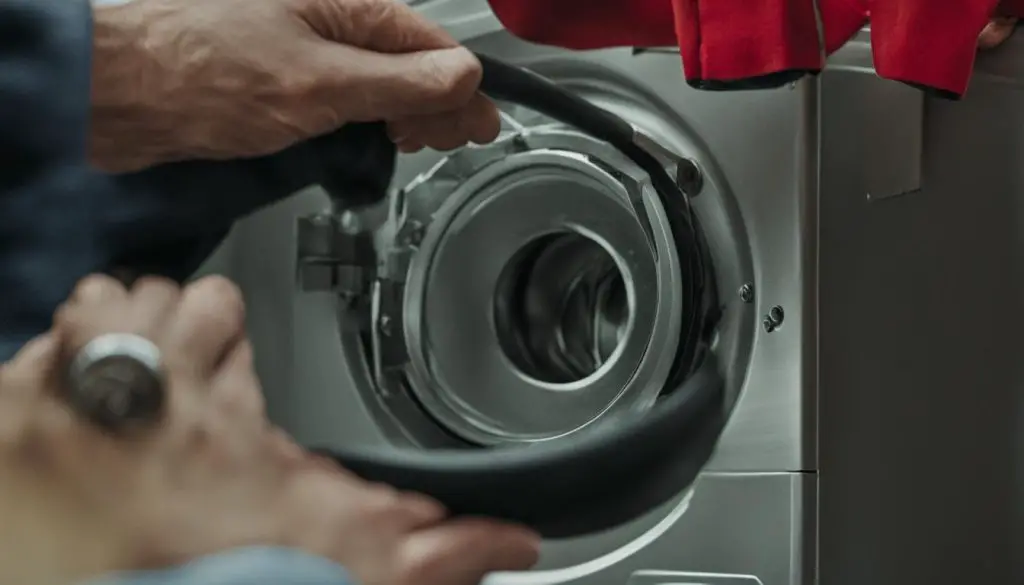
DIY vs. Hiring a Professional
Venting a washing machine drainpipe can be a complex task, and it’s important to consider whether to tackle it as a DIY project or hire a professional plumber. While some DIY enthusiasts may feel confident in their abilities, it’s essential to weigh the risks and complexities involved.
DIY venting may seem like a cost-effective option, but it can lead to complications and potential damage if not executed correctly. The complexities of venting, such as determining the proper vent size, understanding local plumbing codes, and ensuring adequate ventilation, require expertise and experience.
Hiring a licensed plumber offers several advantages. A professional plumber has the knowledge and training to perform the venting job correctly, ensuring optimal functionality of your washing machine drainpipe. They can navigate the complexities of venting and are familiar with local regulations and building codes.
Additionally, by hiring a licensed plumber, you can have peace of mind knowing that any potential issues or complications will be handled efficiently and effectively. They have access to specialized tools and equipment, allowing them to complete the project safely and professionally.
Furthermore, opting for professional plumbing services can potentially save you money in the long run. While the upfront cost may be higher, DIY venting mistakes can result in costly plumbing repairs down the line.
Ultimately, the decision between DIY venting and hiring a professional plumber depends on your skill level, confidence, and willingness to take on potential risks. But considering the complexities of venting, the expertise of a licensed plumber can ensure a successful and hassle-free project.
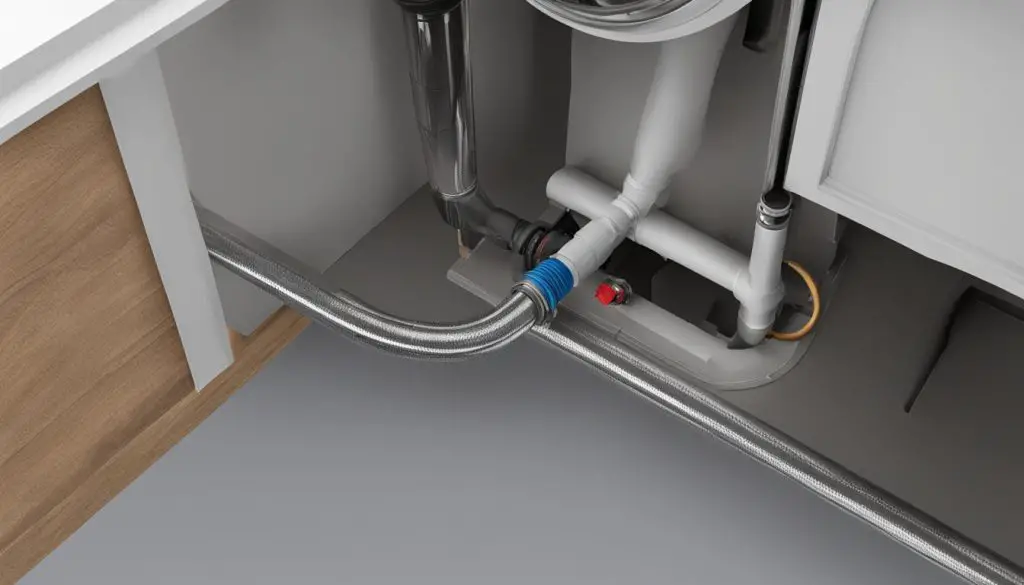
FAQ
Why is venting a washing machine drainpipe important?
Venting is essential to prevent plumbing issues like clogged drains, water leaks, and foul smells. It allows air to enter and exit the plumbing system, preventing pressure buildup and the buildup of harmful sewer gas.
How can I maintain my washing machine drain?
Regular maintenance includes cleaning the lint trap, checking and cleaning hoses and drainpipes for leaks or blockages, and ensuring proper spacing of hoses and pipes.
Should I vent the washing machine drainpipe myself or hire a professional?
Venting a washing machine drainpipe can be complex, and hiring a licensed plumber is recommended to ensure the job is done correctly and avoid potential complications or damage.

